


Joining a cooking lesson at Kain Tulog is an incredibly fun and enriching experience! Whether you’re a beginner or a seasoned cook, each session is filled with hands-on learning, delightful flavors, and friendly guidance. You’ll discover authentic techniques, learn to create flavorful dishes, and connect with fellow food enthusiasts. At Kain Tulog, cooking isn’t just about following recipes; it’s about enjoying the process, sharing culinary traditions, and creating memories in the kitchen. Don’t miss out on this wonderful chance to elevate your cooking skills and have a great time doing it! Please follow our instagram for more information to get the latest cooking lesson menu. We prioritize our guests’ preferences when it comes to what they’d like us to prepare. Please feel free to contact us in advance using the email address <watanuki208@gmail.com>. We look forward to connecting with you before your visit.

5,000 yen / per a person
Duration: 2.5 Hours
Please enjoy seafood while you are in Japan. There are many unique dishes made with fish, cephalopods (squid, cuttlefish, octopus), crustaceans (shrimp, crab, lobster), shellfish and seaweed. The environmental concern including the conservation of fisheries resources has risen internationally and like most people I am hoping that I could eat seafood forever. In order to do that, we must choose fish that are caught sustainably. Japanese people are very knowledgeable about how to eat fish. It is particular about the freshness of the fish. We have been eating sushi and sashimi for a long time. Japanese people also dry and process the fish. I would like to talk about the relationship between Japan and seafood in this lesson.
How to Book & Cancel Policy
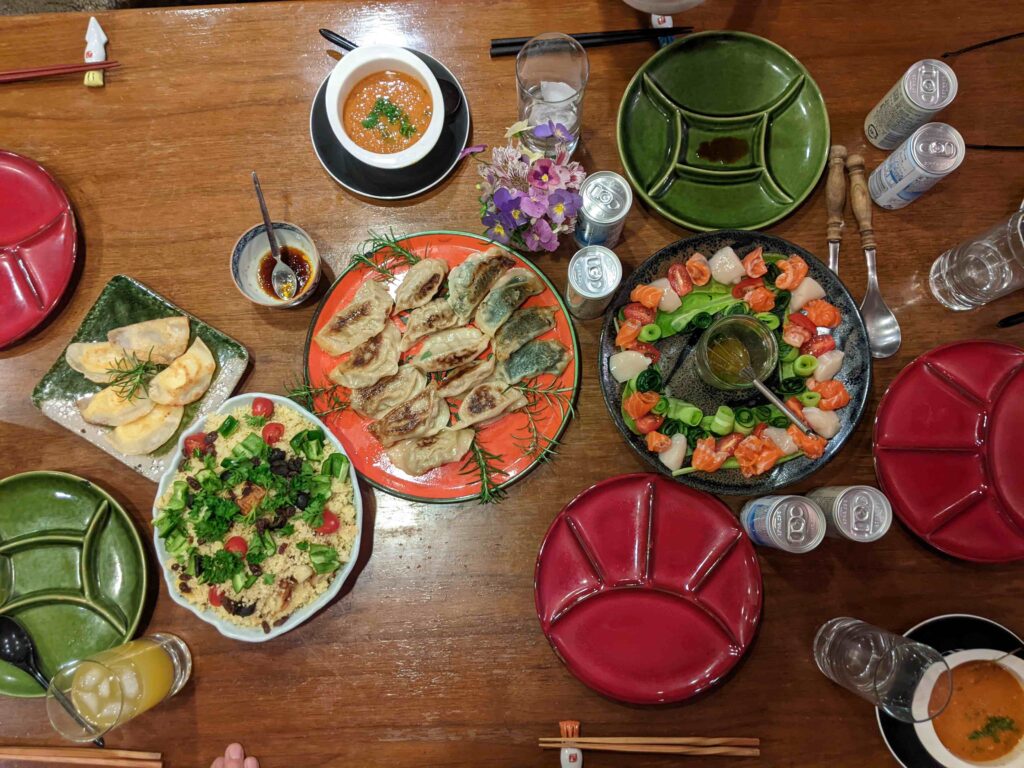
The photo from my lesson. It contains Soup de Poisson and Gyoza made with Sakura Shrimp and Scallops. Gyoza filling is often made with minced pork, but I am interested in seafood. Sakura shrimp are in season now. Eat scallops to support Hokkaido (China, which was the largest export destination, has banned their imports). Gyoza is now international. More and more inbound tourists are requesting to make and enjoy eating gyoza in Japan.
3時間前

Omusubi (also known as onigiri) is a Japanese rice ball, typically shaped into a triangle or round form, often filled with ingredients like salted salmon, pickled plum, or tuna mayo, and wrapped partially in nori (seaweed). It’s a popular and convenient snack or meal option.
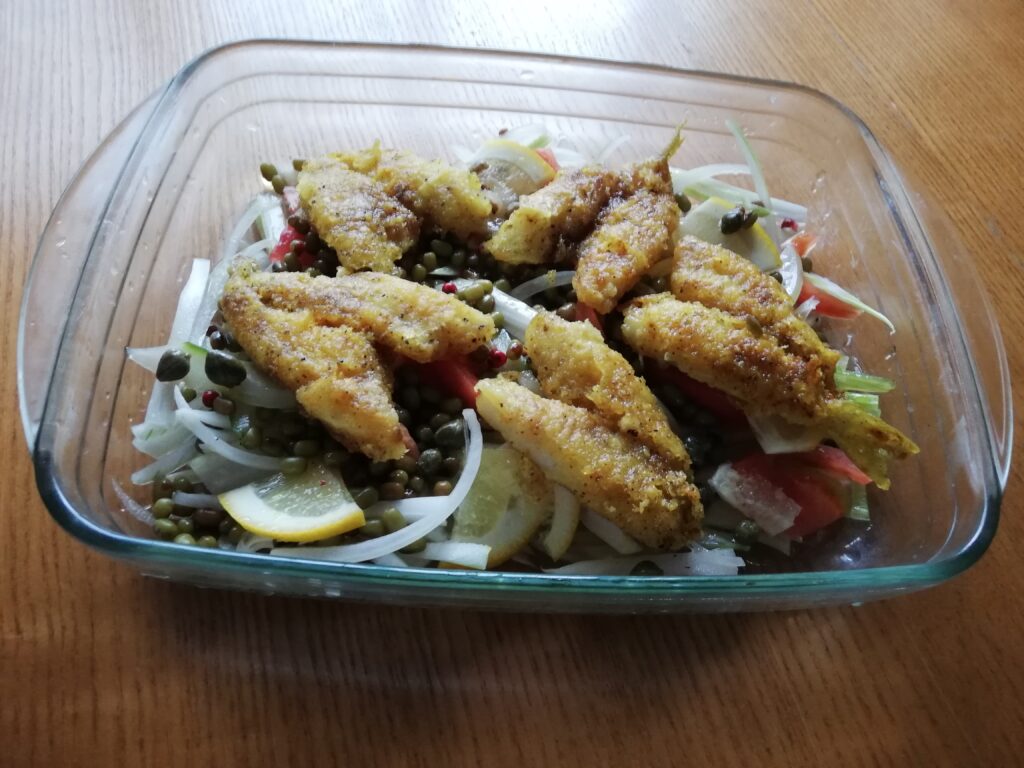
Kisu (Japanese Whiting) Escabeche. When you are in Japan, let us go “kisu” fishing in Tokyo Bay. Fish, cook, eat and sleep. It will be a wonderful experience. Kisu is delicious. Tempura, Fry, Gratin, Fish Ball, Sashimi. It is said that Spain brought escabeche to the world as it is found in the cuisine of Spanish territories from Europe to the Americas, the Philippines, and Guam. Escabeche is similar to Chinese sweet-and-sour fish. I was not able to buy some vegetables. Expensive! I usually cook dishes from things that are in the fridge.
https://www.facebook.com/hunabasikouturitaki/
https://www.youtube.com/watch?v=XHUPA6TEuAo
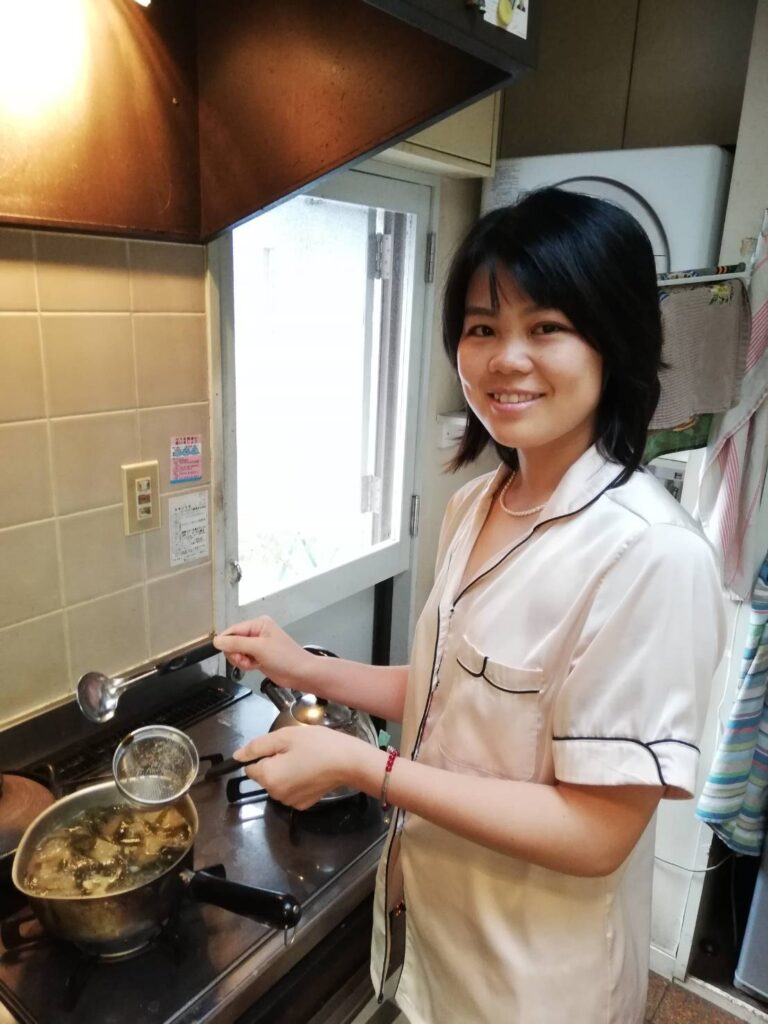
Miso-Soup became common among the samurai society during the Kamakura period (1185 – 1333). Common ingredients in miso-soup are tofu, abura-age (deep-fried slices of tofu), naga-negi (green onion), wakame seaweed, Japanese radishes and potatoes. Here, we will use eggplant and yakifu (baked wheat gluten). Unlike most western soups, miso soup is not to be eaten with a spoon. Hold the bowl and bring it to your mouth to eat its contents with your chopsticks.
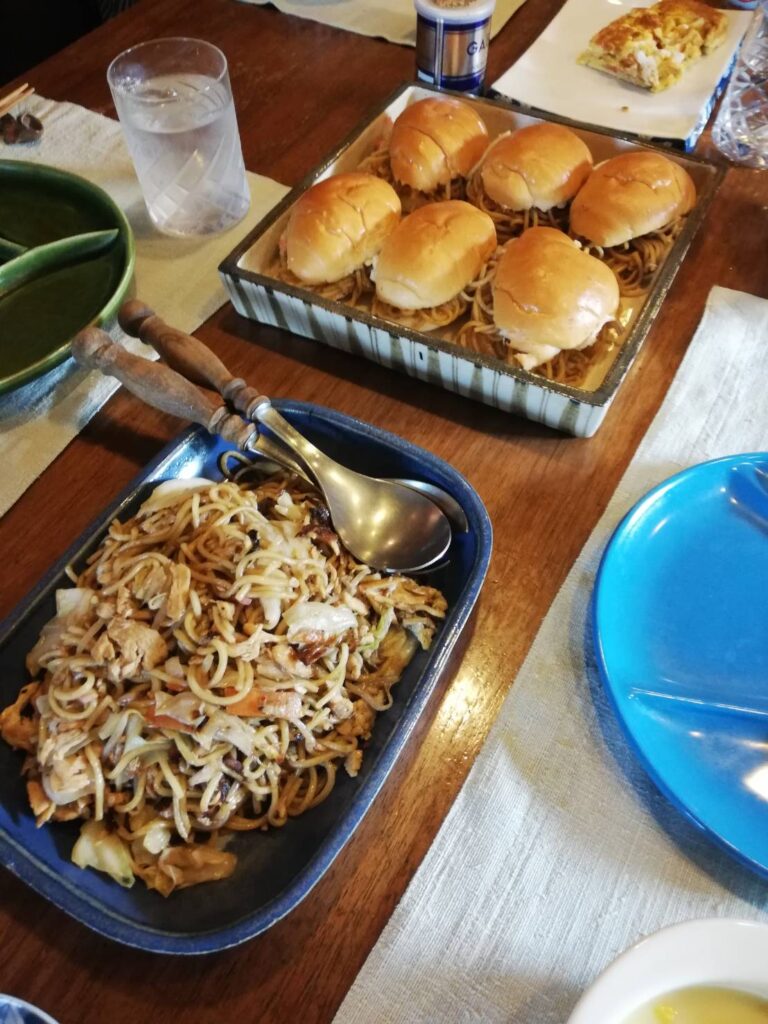
Yakisoba Pan (Japanese stir-fried noodles in bread) are becoming increasingly popular overseas. People from other countries are amazed by the combination of bread and noodles (the first time), and are amazed by how delicious it is (the second time). It’s especially popular in Dubai, UAE. I sometimes serve yakisoba pan at my guesthouse, and it’s highly regarded by the guests. Fresh yakisoba noodles are cheap. If you have leftover vegetables in the fridge and salad chicken/canned tuna, it’s ready in no time. It’s perfect for busy mornings
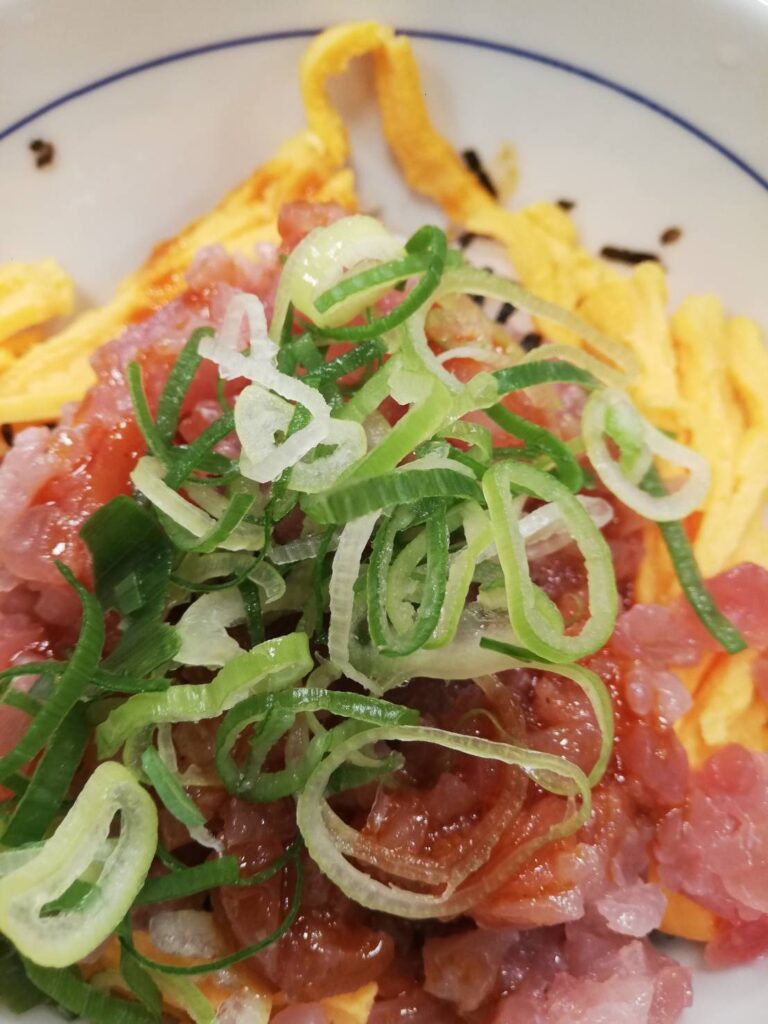
Tuna Tataki Don. In Japan, generally, people eat tuna sushi or sashimi. Seared (tataku) tuna is recommended. Yukhoe Don is also popular. I worked on the introduction of tuna haenawa fishing in Iran. Haenawa means long-line. It was a UNIDO Project. I wrote three reports. The highlight was Ikejime. How to keep the freshness of tuna after catching. Japanese like fresh tuna so Ikejime technique was developed long time ago. https://www.youtube.com/watch?v=9QqlEjFtt3U
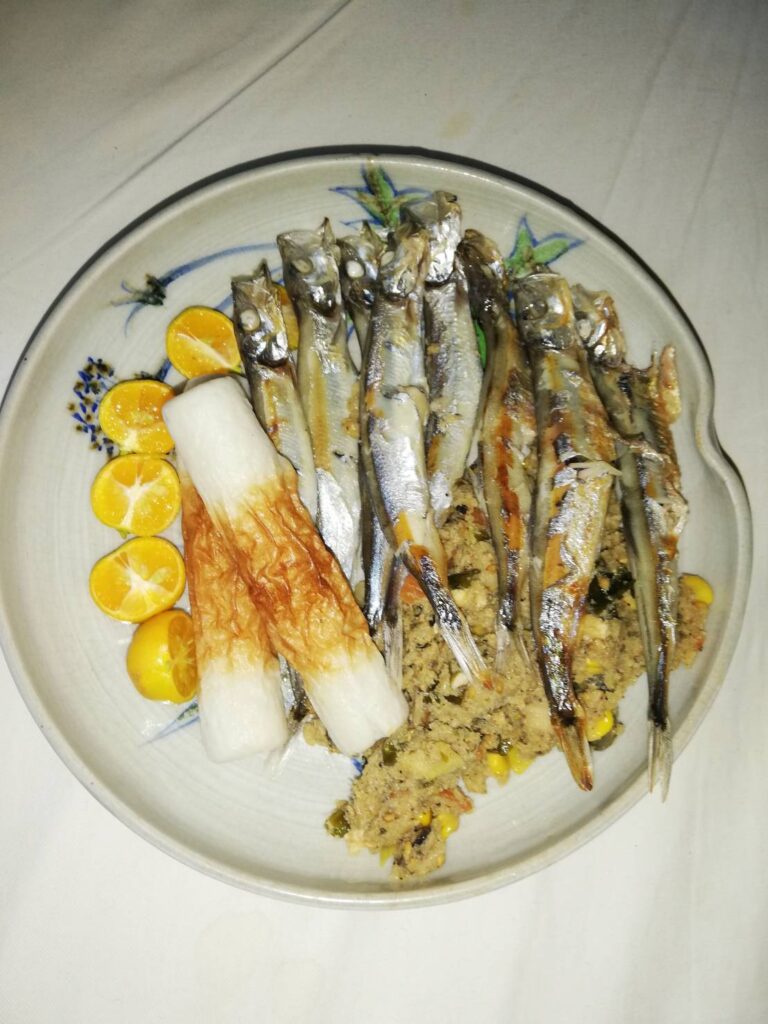
Shishamo & Chikuwa & Okara & Calamansi. Shishamo is a rare and beloved fish found in Japan, specifically along the Pacific coast of Hokkaido. Chikuwa is a Japanese fish cake. It is called “bamboo ring” because of its shape. Okara refers to the insoluble residue left after making tofu or soymilk. Calamansi is a small citrus that is popular in Filipino cuisine.
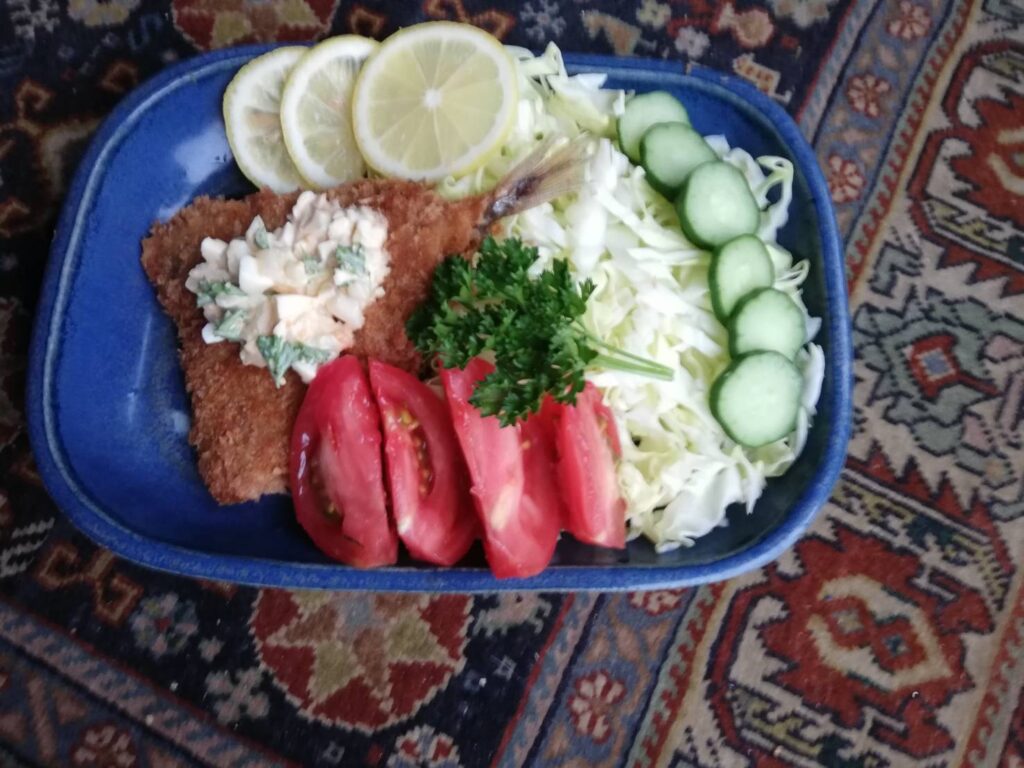
Aji Fry (Fried Horse Mackerel) with tartar sauce. This dish was born from the fusion of horse mackerel, which has long been loved in Japan, and the Western style of fried cooking that was introduced in the Meiji era (1868-1912). With the spread of breadcrumbs, postwar food conditions, and the school lunches, Aji Fry has become so widely loved that it can be called a national dish today. The practical exam at the culinary school I attended involved filleting a horse mackerel into three pieces. You can’t pass unless you cleanly fillet it so that no meat remains on the bones. Every day I practiced in the kitchen. Every day I ate horse mackerel. Matsuura City in Nagasaki Prefecture is the mecca for Aji Fry. To preserve the freshness of the horse mackerel, they use a method called “one frozen”. I ate it at the Tokyo Seafood Show, and thought something was different.
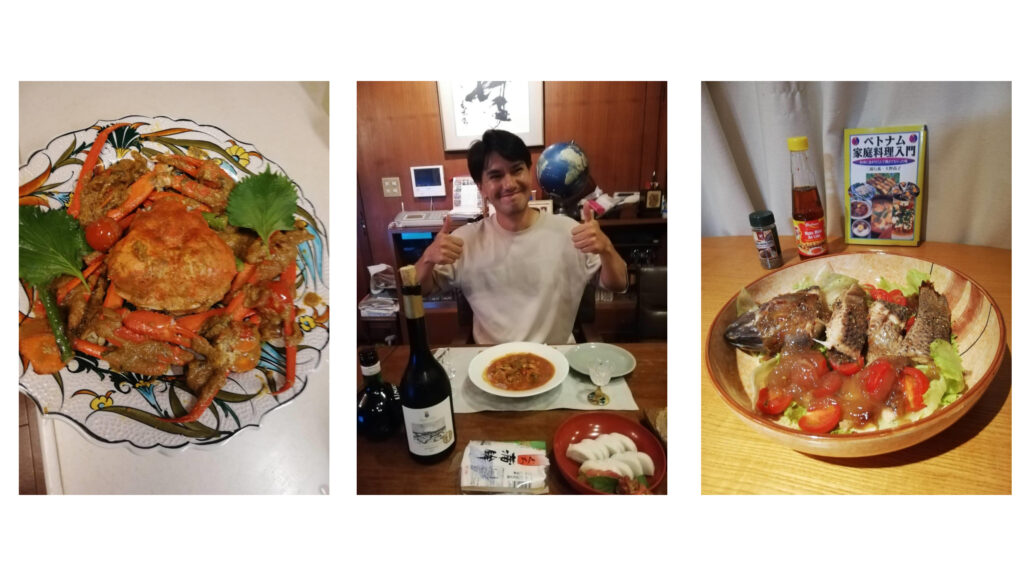
4,500 yen / per a person
Duration: 2.5 Hours
Local cuisines also called home cooking are becoming popular for foreign visitors to Japan and foreigners living in Japan. Home cooking and restaurants are different. What Japanese usually eat at home can be experienced in my lessons. For example, sardine dishes. Sardines are affordable and tasty hence a long-loved friend of Japanese people. Things to think about are sardines are caught all over the world and there are many ways to cook. I also want to introduce Keihan is a typical local dish of the Amami region. It might be a good idea to make use of my overseas experience. Senegalese Thieboudienne (fish and rice), Filipino Adobong Pusit (marinated squid), French Soup de Poisson (fish soup). I have plenty of ideas. Please look forward to the launch of my cooking classes.
How to Book & Cancel Policy

Omu-Rice is one of the favorites of the visitors from overseas. Make salmon fried rice. For one person, use 200g of the leftover rice and an egg. Grilled salmon becomes invisible after wrapping tamagoyaki, but recommended. Frying pan size is important to make tamagoyaki. Too big is not good. Be careful, the ketchup pours out (mottainai). Marinated octopus in wine vinegar was a dish that was served with.

I understand from Taste Atlas Report that foreign people like karaage very much. A battle against convenience stores took place. “Karaage-kun” Lawson 248 yen, “Karaage-bo” Seven Eleven 167 yen and “Myself” Kagoshima Ginmidori 342 yen. People are saying Karaage-kun is must-try food in Japan. Karaage-bo is juicy and goes well with beer. My karaage was comparable to karaage sold at convenience stores. Self-congratulation.

Miso-Soup became common among the samurai society during the Kamakura period (1185 – 1333). Common ingredients in miso-soup are tofu, abura-age (deep-fried slices of tofu), naga-negi (green onion), wakame seaweed, Japanese radishes and potatoes. Here, we will use eggplant and yakifu (baked wheat gluten). Unlike most western soups, miso soup is not to be eaten with a spoon. Hold the bowl and bring it to your mouth to eat its contents with your chopsticks. https://kokoro-jp.com/culture/316/

Oyako means “parent (chicken, oya) and child (egg, ko)”. Cut chicken momo niku (thigh meat) into 2cm squares and grill it with the skin-side down. No oil. A seasoning is Mentsuyu (noodle soup base) and Water only. 1:2. Beat 2-4 eggs and break into three parts. Top with eggs like writing the “の” character. Preferably half-baked. Difficult to control heat. Adding onions becomes more delicious. Lastly, make a bowl (don). Bottom, rice. On top of that, oyako. Sprinkle mitsuba (flavorful leaves). As you like, shichimi togarashi, beni shoga, kona sansho.

A traditional miso soup that originated from Kagoshima Prefecture. Only three ingredients. Mugi Miso, Bonito Flakes and Green Tea. Put raw egg, minced ginger, chopped green onions, if you like. Good for recovering from fatigue. Also, chabushi is the best cure for hangover.

Miso-Soup became common among the samurai society during the Kamakura period (1185 – 1333). Common ingredients in miso-soup are tofu, abura-age (deep-fried slices of tofu), naga-negi (green onion), wakame seaweed, Japanese radishes and potatoes. Here, we will use eggplant and yakifu (baked wheat gluten). Unlike most western soups, miso soup is not to be eaten with a spoon. Hold the bowl and bring it to your mouth to eat its contents with your chopsticks. https://kokoro-jp.com/culture/316/